Exploring the Multifaceted Uses of Kites
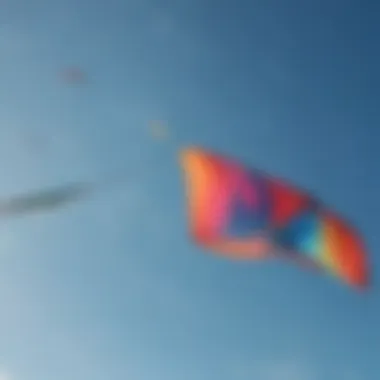
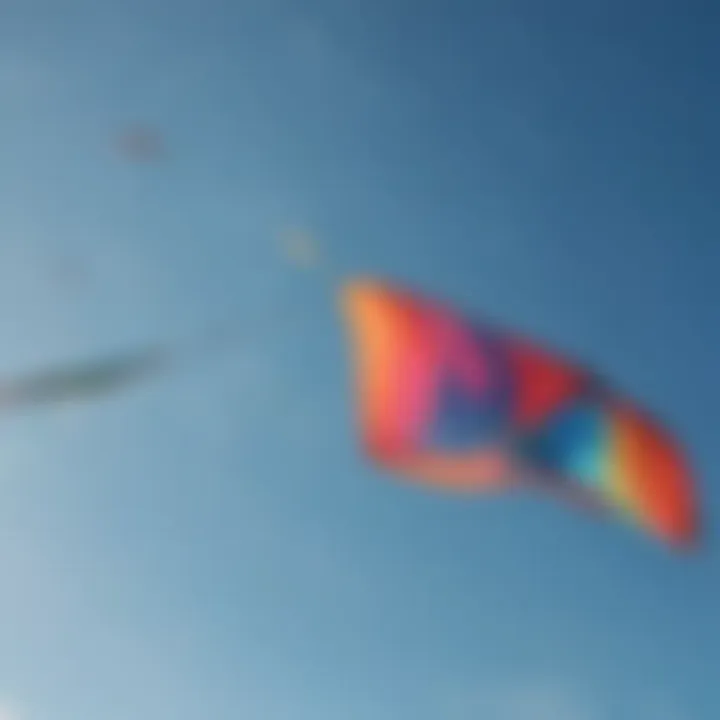
Intro
Kites have been part of human culture for centuries. Though often seen as mere toys, their applications stretch far beyond recreation. This article explores the multifaceted uses of kites, considering their significance in various fields. From cultural rituals to scientific endeavors, the role of kites is more profound than many realize.
The primary objective is to uncover how kites serve diverse purposes, including their historical relevance and modern technological advancements. By diving into this exploration, we aim to engage readers who have a keen interest in the rich intersection of culture, science, and innovation.
Historical Overview of Kites
The historical context of kites is not merely a backdrop; it forms an intricate tapestry that reveals humanity's creative spirit and technological evolution. Understanding this history enhances our appreciation for kites and their contemporary relevance. Throughout this section, we will delve into the origins of kite flying, exploring its inception and evolution through various ancient civilizations. This investigation provides insight into how kites progressed from utilitarian purposes to strategic cultural symbols.
Origins of Kite Flying
Kite flying can be traced back to ancient China, over two thousand years ago. The earliest references indicate that kites were crafted from bamboo and silk, serving primarily military and scientific functions. Early innovators used kites to test wind conditions and send signals. The renowned Han dynasty era saw the first documented use of kites for warfare, where they were employed to estimate distances and even scare enemies.
As kite flying spread across regions, its purposes expanded. These aerial objects became a source of entertainment and artistic expression. Kites were decorated with intricate designs, showcasing regional art forms. The evolution of kite materials from paper to modern synthetic fabrics shows humanity's adaptability and innovation. People began to see kites not just as tools, but as vessels of creativity and imagination.
Kites in Ancient Civilizations
Various ancient civilizations incorporated kites into their cultures. In Japan, kites were used in religious ceremonies and festivals. The traditional Japanese kites, called "doraji," were made with rice paper and decorated with vibrant colors. Notably, they were flown during the New Year to invite prosperity and ward off evil spirits.
In India, kites hold immense cultural significance, particularly during festivals like Makar Sankranti. This event not only celebrates the arrival of warmer weather but also unites communities through kite flying competitions.
In addition to their cultural roles, kites also found a place in the expanding realms of science and technology. Ancient scholars and inventors began to explore the principles of aerodynamics through kites, laying foundational work for modern aeronautical engineering.
Kites have played diverse roles across history, from military tools to symbols of joy and community. Their legacy continues to inspire enthusiasm for flight and innovation.
Today, the legacy of kite flying still captivates both individual enthusiasts and scholars alike. By examining their origins and the roles they played across civilizations, we gain a deeper appreciation of how kites represent not just a recreational activity, but also the convergence of culture, science, and community.
Cultural Significance of Kites
The cultural significance of kites extends far beyond mere outdoor recreation. Kites symbolize a rich tapestry of human expression, tradition, and communal engagement. Across various cultures, kites serve not only as playful apparatus but also as important vessels for heritage and identity. They are integral to festivals, rituals, and celebrations, creating a sense of togetherness among participants. Furthermore, kites represent a blend of art, science, and engineering, showcasing diverse skills and craftsmanship through the various designs and technologies employed in their creation.
Kite Festivals and Celebrations
Kite festivals are vibrant cultural events that draw participants and spectators from all walks of life. These gatherings showcase elaborate kites that come in various shapes, sizes, and colors. In places like India, the Makar Sankranti festival prominently features kite flying as a cherished activity. During this time, rooftops become arenas for rhythmic battle, with flyers competing to cut each other's strings and show off their kite-flying prowess. Another prominent festival is the International Kite Festival held in Gujarat, India, attracting visitors from around the globe.
In addition to competition, many festivals celebrate peace and unity. For example, the annual International Kite Festival in Weifang, China, not only embraces kite flying but also promotes cultural exchange and friendship among nations. This spirit of collaboration highlights how kites transcend geographical barriers.
The communal aspect of these events cannot be overlooked. Kite festivals often include traditional music, food stalls, and interactive activities that engage families and communities.
Kites in Folklore and Traditions
Kites feature prominently in the folklore of many cultures, often associated with various myths and legends. In Japan, the custom of flying kites during the New Year is believed to invite good fortune and dispel evil spirits. This practice is rooted in the historical belief that the higher the kite flies, the closer it gets to the heavens.
Similarly, in the United States, the story of Benjamin Franklin's famous kite experiment has become legendary. Franklin's kite-flying experiment during a thunderstorm symbolized the quest for knowledge and scientific exploration, cementing kites as tools of both play and discovery.
In addition to folk tales, kites often appear in art and literature, further emphasizing their importance in cultural narratives. Through illustrations and stories, the imagery of kites evokes themes of freedom and aspiration, making them a powerful symbol in various traditions.
Recreational Uses of Kites
Recreational uses of kites encompass a broad spectrum of activities that extend beyond simple enjoyment. These activities not only foster a sense of community but also encourage physical fitness and mental well-being. Kite flying can be both a solitary pursuit and a communal effort, making it versatile in its application. In this section, we will explore two main aspects of recreational kite usage: hobbyist kite flying and competitive racing.
Kite Flying as a Hobby
Kite flying as a hobby offers numerous benefits. On a fundamental level, it allows individuals to reconnect with nature. Whether it’s at a park, a beach, or an open field, flying a kite invites people to step outside. The experience encourages not only relaxation but also mindfulness. As one engages with the wind and observes the kite dance above, the stresses of daily life often fade away.
From a physical perspective, kite flying can enhance coordination and balance. Navigating a kite demands focus and precision; thus, individuals often find themselves actively engaged in their movements.
People may also discover various styles and techniques in kite flying. There are different types of kites, including delta kites, box kites, and stunt kites; each offering unique flying experiences. Hobbyists often enjoy personalizing their kites, whether through colors, designs, or even through building their own kites from scratch. This process not only nurtures creativity but also adds a layer of personal investment to the activity.
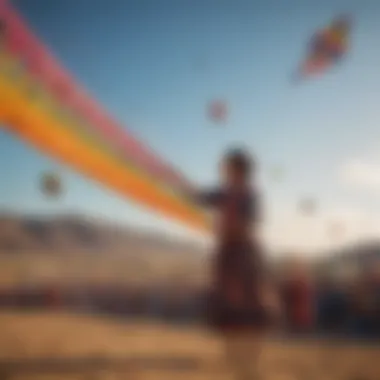

Moreover, joining local kite clubs fosters connections among kite enthusiasts. These groups facilitate social gatherings, where novices can learn from seasoned flyers. Knowledge sharing often leads to improved skills and a deeper appreciation for the art of kite flying.
Kite flying is not just about the kite itself; it embodies a spirit of freedom, creativity, and self-expression.
Competitions and Races
Competitions and races elevate the recreational aspect of kite flying to a more structured environment. These events demonstrate the technical skills and artistry inherent in kite flying. Participants from various backgrounds come together, showcasing their craftsmanship while vying for accolades.
Kite competitions typically involve various categories based on design, performance, and creativity. Events might focus on distance, precision flying, or even aerial tricks. Each category requires a different set of skills and often emphasizes teamwork when flying multi-line kites.
As competitive flying grows in popularity, several national and international events have emerged. These gatherings not only draw enthusiasts from diverse locales but also stimulate local economies by attracting visitors.
The thrill of competition fosters an environment of innovation. Participants continuously seek to improve their kites and flying techniques, exploring new materials or designs that can enhance performance. Additionally, competitions turn kite flying into a spectator sport, drawing larger crowds and generating interest in this unique pastime.
Kites in Education
Kites serve not only as a source of amusement but also as a significant educational tool. Their versatility offers numerous benefits in teaching various subjects, particularly in science, technology, engineering, and mathematics. Through the process of kite design and construction, students engage in hands-on learning, which enhances their understanding of complex concepts. This kinesthetic approach can lead to better retention of knowledge and can ignite students’ passion for learning.
One of the main advantages of incorporating kites into educational settings is their ability to stimulate interest in STEM fields. Creating kites requires knowledge of aerodynamics, materials, and physics, which makes the experience both practical and applicable to real-world scenarios. Additionally, kite flying allows students to experiment with forces such as lift, drag, and stability, providing a tactile way to explore theoretical principles.
STEM Learning through Kite Building
Kite building is a clear example of project-based learning that incorporates multiple disciplines. When students construct kites, they need to apply geometry to design the shapes and calculate measurements for materials. This process often leads to discussions about angles, symmetry, and balance. Furthermore, selecting the right materials teaches them about the properties of different substances, like the durability of plastic compared to paper.
Students can also apply physics principles when testing their kites. They observe how different designs affect performance. For instance, they can modify wing shapes and sizes to see how these changes influence the kite's ability to fly. This type of experimentation encourages critical thinking and problem-solving skills, which are essential for future academic and career success.
Kites in Physics Demonstrations
Kites serve as effective tools for physics demonstrations, particularly in understanding the principles of flight. Educators can use kites to illustrate concepts such as lift, thrust, and drag within a controlled environment. For instance, when a kite ascends, it is not just a matter of wind; it involves understanding how forces interact.
Moreover, kites can effectively demonstrate the impact of variables on flight dynamics. When students tweak factors like weight or string length, they can directly observe the results. These practical lessons can lead to insightful discussions about the laws of motion and the importance of aerodynamics.
"Empirical learning experiences, such as kite flying, can greatly enhance learners' understanding of key scientific principles."
Kite flying also introduces students to the concept of energy transfer. The energy from wind is transformed into mechanical energy that propels the kite into the sky. Educators can discuss renewable energy concepts in conjunction with kite flying, making the learning experience both relevant and timely.
Scientific Uses of Kites
The scientific applications of kites extend far beyond mere play. This segment of the article seeks to illuminate how kites serve essential functions in important areas like meteorology and environmental monitoring. By analyzing these applications, we can appreciate the versatile role kites play in gathering data and enhancing our understanding of the natural world. The benefits of using kites in these fields include cost-effectiveness, accessibility, and the ability to reach locations often difficult for traditional instruments.
Kites in Meteorology
Kites have a longstanding history in meteorology, acting as tools for atmospheric research. They can ascend to considerable altitudes, thus allowing scientists to collect valuable data on temperature, humidity, and wind patterns at various levels of the atmosphere. This data is vital for weather prediction and climate studies.
The use of kites for meteorological purposes dates back over a century. Researchers employ kites equipped with sensors and tracking systems to observe conditions in real-time. The following are key advantages of kites in meteorology:
- Cost-Effectiveness: Kites can be made with simple materials that are affordable compared to obtaining flights or using satellite data.
- Accessibility: They provide a relatively simple method for accessing remote or hard-to-reach areas for atmospheric measurements.
- Data Collection: Kites can carry instruments that measure different atmospheric parameters, which are helpful for validating computer models used in meteorology.
"Kites offer a unique alternative in data collection, bridging the gap between the ground and sky, both literally and figuratively."
Environmental Monitoring with Kites
Kites also find their place in environmental monitoring. They can assist in gathering data on pollutants, vegetation health, and other ecological parameters over large areas. The adaptability of kites makes them suitable tools for monitoring various environmental conditions without the heavy investment typically associated with larger drones or aircraft.
Some notable benefits of employing kites for environmental studies include:
- Lightweight and Portable: Kites can easily be transported to different locations, enabling diverse monitoring activities.
- Ecosystem Monitoring: They can be used to measure and analyze vegetation cover, which is important for biodiversity studies.
- Pollution Tracking: Kites equipped with sensing technology can help track airborne pollutants in specific areas.
Relevant Resources
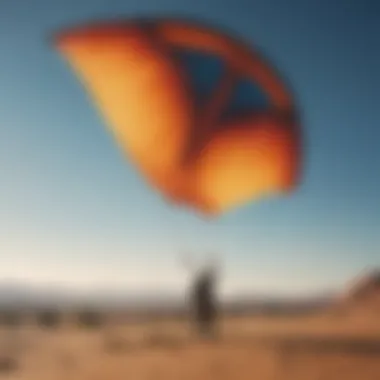
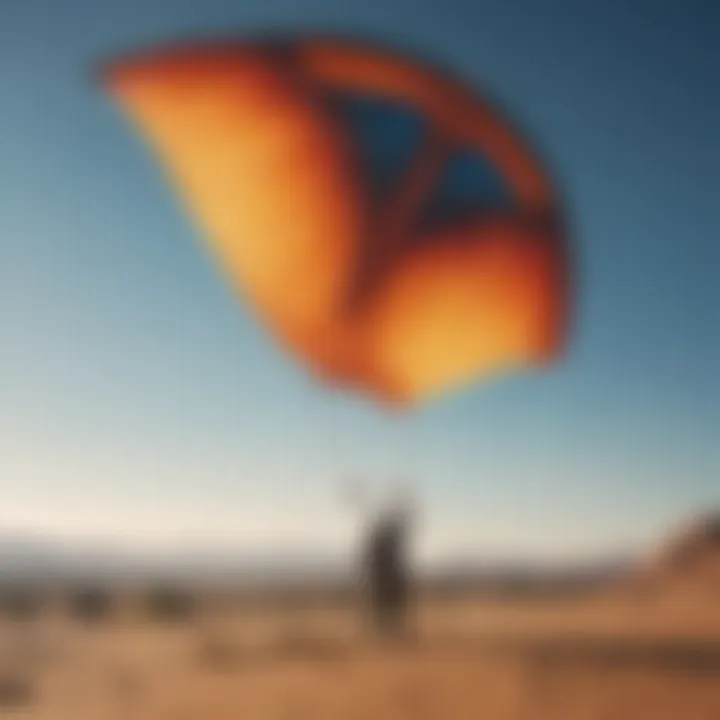
Commercial Applications of Kites
The commercial applications of kites represent a captivating facet of their use, extending far beyond recreational pursuits. In today’s world, the integration of kites into various industries reflects innovation and creativity. This section explores how kites are employed in advertising and as wind energy solutions, demonstrating their versatility in commercial contexts.
Kites in Advertising
Kites provide a dynamic platform for advertising. Businesses leverage the visual impact of kites to capture attention in outdoor settings. With colorful designs and engaging movements, kites serve as moving billboards, drawing interest from far and wide. Companies often utilize kites at events, trade shows, and festivals to enhance their brand visibility.
Operating kites for advertising purposes allows businesses to reach diverse audiences. A well-crafted kite can showcase a logo or message, competing for attention in crowded environments. The soaring presence of a kite can enhance brand recall, especially when paired with product demonstrations or promotions. Moreover, many companies opt for sustainable materials for their kites, aligning with the growing consumer preference for environmentally-friendly marketing strategies.
In advertising, the strategic placement of kites is crucial. Location plays a vital role. Parks, beaches, and open-air events present ideal settings. Here are some key benefits of using kites in advertising:
- High Visibility: Kites catch the eye from a distance, making them effective for brand recognition.
- Engagement Opportunities: They create interactive experiences for audiences, often leading to social media sharing.
- Cost-effectiveness: Compared to traditional advertising mediums, kites can be a cost-efficient option to promote a brand.
Kites as Wind Energy Solutions
The exploration of kites as wind energy solutions marks a significant advancement in renewable energy technology. Researchers and engineers are studying how kites can capture wind energy more efficiently compared to traditional turbines. Kites can fly at higher altitudes where wind speeds are stronger and more consistent.
This innovative approach capitalizes on the idea of airborne wind energy systems. Kites are tethered to the ground, connected to generators. As the kites rise and fall or perform figure-eights, they harness wind energy and convert it into electricity. Some startups, such as KiteGen and Ampyx Power, are pioneering this technology.
Advantages of using kites in wind energy include:
- Less Land Use: Kites require less space than traditional wind farms, impacting land conservation positively.
- Lower Costs: Construction and maintenance costs tend to be lower for kite systems compared to fixed turbines.
- Mobility: Kites can be deployed in various locations, adapting to fluctuating wind patterns more easily.
Kites, therefore, open new horizons for energy generation, combining renewable energy with innovative engineering solutions.
Overall, the commercial applications of kites demonstrate a blend of creativity and practicality. Whether in advertising or wind energy, kites capture the imagination and push boundaries of what is possible.
Kites in Art and Performance
The connection between kites and artistic expression is profound. Kites are not simply tools for flight; they serve as canvases for creativity and avenues for performance. Their shapes, colors, and designs reflect cultural narratives and individual artistry. This section delves into how kites transcend their functional utility to become symbols of artistic expression and cultural significance.
Kites as Artistic Expressions
Kites are a form of visual art that can embody intricate designs and vibrant colors. Artists often utilize kites as mediums to convey messages or cultural heritage. For example, traditional Asian kites feature motifs of dragons or phoenixes, which are deeply rooted in folklore. These designs are not random; each element carries a story or a belief.
Creating a kite requires not just technical skill but also an understanding of form and aesthetics. The process of building a kite is itself an art form. Artists carefully select materials, considering both color and texture, to create kites that are not only aerodynamic but also visually striking. The tension between functionality and aesthetics is a delicate balance that a skilled kite maker navigates.
Additionally, kites often serve as a medium for contemporary artists to explore themes related to nature, freedom, and even politics. Installations featuring kites can challenge perceptions and provoke thought in ways that traditional art forms might not.
A few benefits of engaging with kites as artistic expressions include:
- Preservation of cultural heritage: By designing kites based on traditional patterns, artisans maintain and celebrate cultural histories.
- Encouragement of creativity: Kite making encourages innovation in materials and designs, pushing artists to experiment.
- Community engagement: Kite festivals bring communities together, fostering a spirit of cooperation and joy.
Kites in Cultural Performances
Kites have a significant role in various cultural performances around the world. Festivals, such as the International Kite Festival in Gujarat, India, showcase colorful kite displays while also incorporating cultural rituals. Participants compete in flying their kites, performing synchronized maneuvers, and joyfully engaging in the event.
In certain cultures, kites are integrated into ceremonial practices, symbolizing freedom or connection with the heavens. They represent not only the spirit of the community but also serve as a reminder of traditions that have been passed down through generations.
One notable example occurs in Japan, where the art of kite flying (known as "Tako" in Japanese) is often celebrated during festivals. These kites are typically large and can depict historical figures or significant local symbols, enriching the cultural landscape of the event.
Kite performances can also intersect with dance and music, creating a dynamic spectacle that captivates audiences. The synergy of movement, color, and sound can elevate the experience, transforming a simple act of flying kites into a vibrant performance.
In summary, kites contribute significantly to the realm of art and performance. They bridge gaps between functional items and artistic statements, enhancing cultural narratives while encouraging community interaction. As kites continue to evolve, their role in art will likely expand, bringing fresh perspectives to both artists and audiences.
Innovative Technologies in Kite Design


The advancement of technology has significantly shaped the design of kites, ensuring they are not just relics of tradition but also cutting-edge instruments for various applications. Innovative technologies in kite design expand the possibilities for performance, safety, and usability in both recreational and professional contexts. The significance of these developments cannot be overstated as they drive the kite industry into new realms, making kites appealing to a broader audience, including extreme athletes and scientific researchers.
Materials Advancements in Kiting
The journey of kite materials has evolved dramatically. Early kites were primarily constructed from paper, bamboo, and silk. Modern advancements have introduced high-strength polymers and composites, which enhance durability and reduce weight. For example, ripstop nylon and mylar are common materials today. These materials are critical as they allow kites to withstand stronger winds without damaging their structure.
"The choice of material directly affects the kite's performance and lifespan, making this an essential consideration for designers and users alike."
In addition, advancements in aerodynamic design can be integrated with these materials. This combination enables kites to achieve greater lift and maneuverability. As athletes and enthusiasts seek to enhance their performance, understanding the impact of material choice becomes paramount. This also extends to how a kite can respond to environmental conditions, optimizing the user's experience.
Smart Kites and Their Functions
The incorporation of technology has led to the development of smart kites. These kites utilize sensors and data analytics to offer users feedback and improve their flying techniques. Features such as GPS for tracking flight patterns and wind sensors to advise on optimal conditions make these kites not only functional but also interactive.
Smart kites can provide real-time information about wind speed and direction, enhancing the flying experience. Some even have automated systems that adjust the angle of the kite in response to changing wind conditions, allowing for effortless control.
Additionally, the potential for connectivity allows users to sync their devices and share experiences through social platforms. As extreme athletes engage in kite flying, these smart technologies not only provide performance stats but also build a community around shared experiences and achievements.
The implications of these innovations are substantial, affecting how kites are perceived and utilized in various fields. By incorporating cutting-edge materials and smart technologies, the kite flying experience is transformed into a dynamic and engaging activity suitable for a modern audience.
Future Trends in Kite Usage
The landscape of kite usage is shifting as new technologies and methodologies emerge. This section explores the potential pathways for the future of kites, highlighting their applications in high-tech environments. The integration of modern practices offers significant benefits, enhancing not only the functionality of kites but also expanding their reach into diverse markets. As kites evolve, they become more than just tools for play or artistic expression; they take on new roles in science, business, and entertainment.
Potential for Drone Integration
The possibility of drone integration into kite technology marks a significant evolution in the field. Drones and kites share a commonality in their ability to harness wind. As the drone market grows, so does the potential for kites to serve as complementary tools. Some engineers are already experimenting with designs that combine kite features with drone technology, allowing for enhanced maneuverability and function.
By merging these technologies, users could benefit in several ways:
- Increased Flight Durability: Drones can help maintain a kite's position in strong winds.
- Enhanced Data Collection: Kites equipped with sensors can gather environmental data for scientific studies or weather predictions.
- Improved Performance in Competitions: Drones could monitor kites during races, capturing performance metrics in real-time.
The challenge lies in the reliable production of these integrated devices that can work seamlessly. As more developments occur, we could see companies entering this field, driving innovation further.
"Integration of drone technology into kite design may revolutionize the way we interact with the wind. This is just the beginning of programmable kites managing their own flight paths."
Emerging Markets for Kites
As the world becomes more connected, the market for kites is expanding into new territories. Emerging markets present a ripe opportunity for kite manufacturers and enthusiasts alike. Countries with developing economies have begun to recognize kites not only as cultural items but also as tools for education and environmental engagement.
Key areas to focus on include:
- Education Sector: Schools are increasingly incorporating kites into their teaching curriculum, especially in physics and environmental studies.
- Corporate Branding: Companies are adopting kites as part of outdoor advertising strategies, appealing to rich cultural significances while promoting products.
- Tourism and Events: Kite flying festivals and competitions attract tourists, providing opportunities to boost local economies.
Epilogue
The exploration of kites extends beyond their recreational charm. This section wraps up the various dimensions discussed throughout the article, emphasizing the versatility and adaptability of kites in numerous fields. Kites are not just toys; they serve significant roles in education, science, and culture. Each use reflects the ingenuity of human creativity, tying together history and modern technology. This synthesis is crucial for appreciating kites in their multifaceted applications.
Summary of Kite Uses
In our examination, kites have been showcased across different contexts:
- Historical Significance: Kites evolved from ancient practices to modern-day instruments, revealing how cultures have embraced them for various purposes.
- Cultural Relevance: Kite festivals and traditions highlight the social aspect of flying kites, fostering community engagement.
- Scientific Applications: From meteorological studies to monitoring environmental conditions, kites facilitate valuable scientific observations.
- Commercial Ventures: Kites have found a place in advertising and renewable energy solutions, showcasing their economic potential.
- Educational Value: As tools for learning STEM concepts, kites bridge theory and practice, inspiring future innovators.
By summarizing these uses, we see how kites touch various aspects of life and knowledge. They embody a blend of art, science, and community that continues to adapt and thrive.
The Enduring Appeal of Kites
Kites have a timeless quality that sustains their appeal across generations. They connect individuals to nature and each other, making the act of flying a kite a unique experience. Despite technological advancements, the core enjoyment of kite flying remains unchanged. The simplicity of watching a kite soar continues to captivate both young and old.
- Connection to Nature: The act of flying a kite invites individuals to interact directly with the elements, fostering a deeper appreciation for the environment.
- Social Interaction: Kite flying brings together families and communities, creating bonds through shared experiences.
- Innovation in Design: The evolution of kites, from traditional paper models to high-tech variants, reflects ongoing human creativity and adaptability.
The sustained interest in kites serves as a testament to their role in human culture, combining history with the potential for future innovations.
In summary, the enduring appeal of kites lies in their ability to inspire joy, provoke curiosity, and facilitate learning. Their resilience in maintaining relevance highlights their place within both cultural and educational landscapes.



